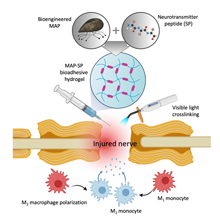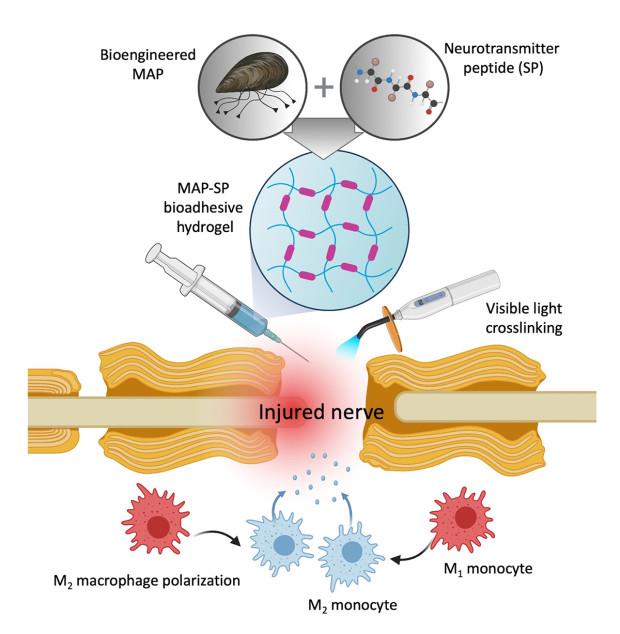본문
Sutureless neurorrhaphy system using a macrophage-polarizing in situ visible light-crosslinkable adhesive protein hydrogel for functional nerve regeneration

By prof. Kye Il Joo,
Chemical Engineering and Materials Science
Research Profile
kijoo@ewha.ac.kr
Surgical intervention after traumatic peripheral nerve injury relies heavily on sutures. While the suture method often burdens functional nerve regeneration by causing secondary traumatic damage and eliciting prolonged inflammatory immune responses, replacing sutures has rarely been considered because secure anastomosis be- tween severed nerve ends has been the utmost priority in neurorrhaphy. In the present work, a macrophage-polarizing sutureless neurorrhaphy system was proposed by using an in situ visible light-crosslinkable protein- based bioadhesive hydrogel containing a functional neurotransmitter peptide. The efficacy of the proposed bioadhesive hydrogel as a successful sutureless neurorrhaphy system was intensively evaluated in vitro and in vivo. Using a rat sciatic nerve defect model, our findings suggested that this macrophage-polarizing bioadhesive hydrogel offered effective sutureless anastomosis and the capability to induce M2 macrophage polarization for effective tissue remodeling, significantly enhancing functional nerve regeneration compared with conventional sutures. Taken together, these results suggest that our macrophage-polarizing functional bioadhesive hydrogel system can be utilized as a promising alternative to surgical sutures for nerve regenerative medicine applications.
* Related Article
Hogyun Cheong, Young-Joon Jun, Eun Young Jeon, Jong In Lee, Hyun Jun Jo, Hae Yeon Park, Eunjin Kim, Jong Won Rhie, Kye Il Joo, Hyung Joon Cha, Sutureless neurorrhaphy system using a macrophage-polarizing in situ visible light-crosslinkable adhesive protein hydrogel for functional nerve regeneration, Chemical Engineering Journal, Volume 445, October 2022

